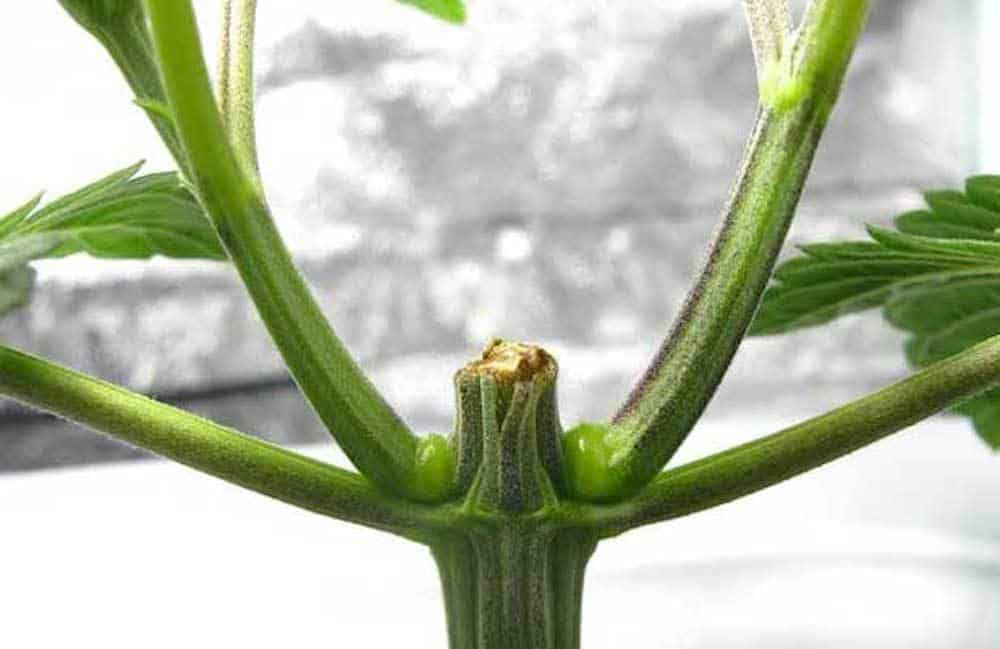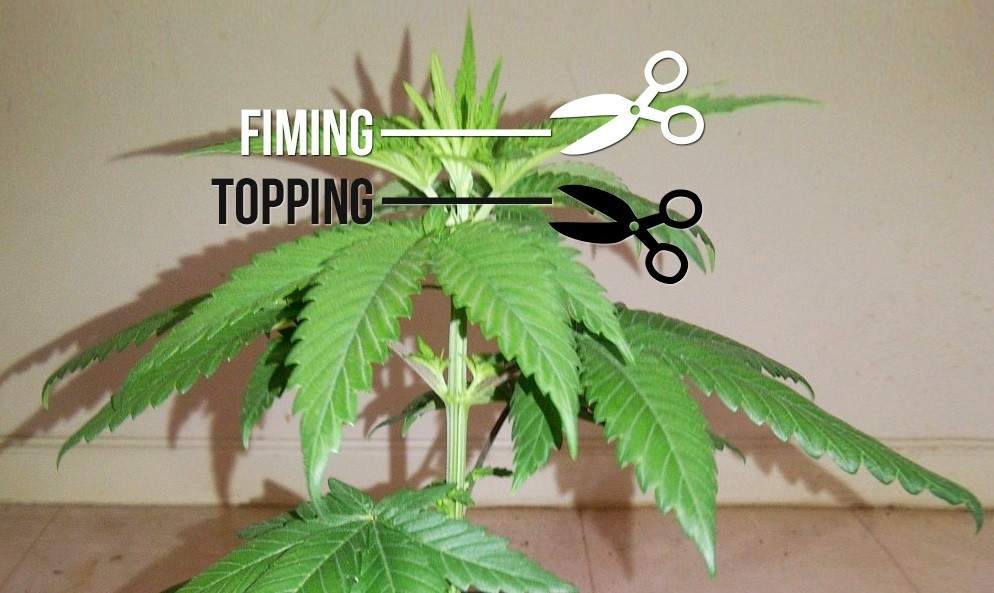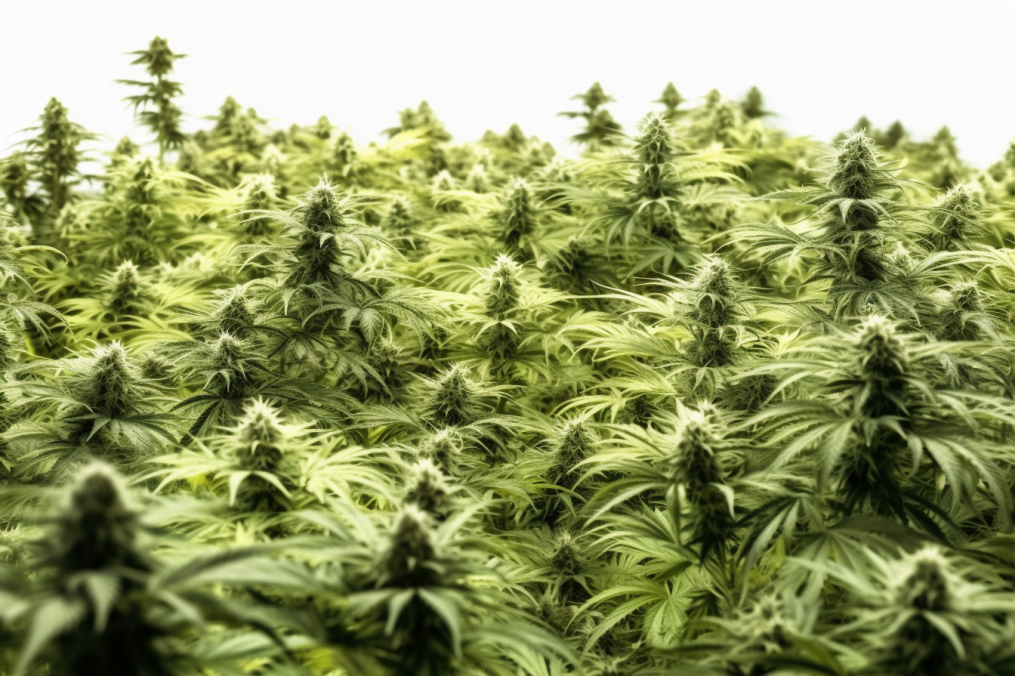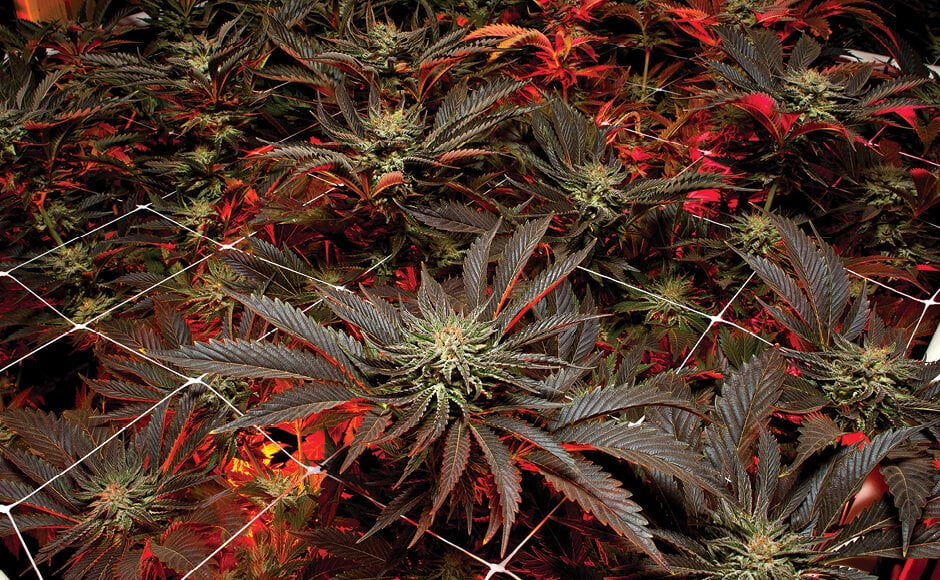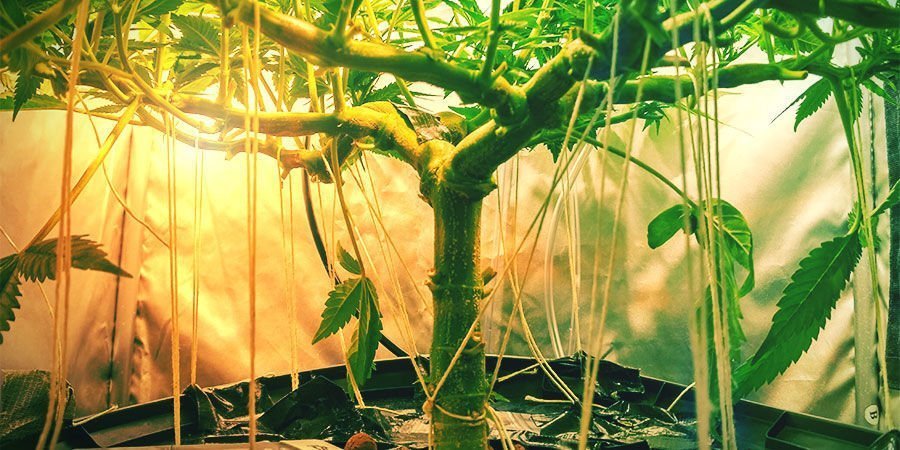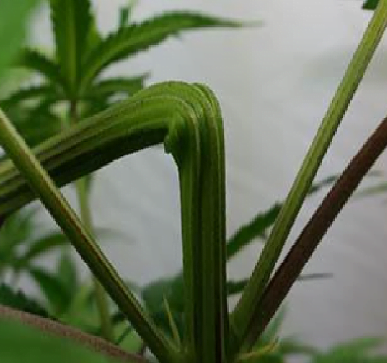English
Cannabis training techniques are crucial to maximizing yields and producing high-quality flowers. There are several methods of training cannabis plants, each with its own benefits and drawbacks.
7 Cannabis training techniques
- Topping
Topping is one of the most popular training techniques used by cannabis growers. It involves cutting off the top of the main stem to encourage lateral growth. Topping should be done early in the vegetative stage, when the plant has developed a few sets of leaves. To top a plant, use a sharp, sterile pair of scissors or shears to cut off the top of the main stem, just above a set of leaves. This will stimulate the growth of two new branches at the site of the cut and strengthen the lower branches.
- Fimming
Fimming is similar to topping but involves cutting off less of the plant. To fim a plant, cut off the top of the main stem, leaving a small amount of growth. Basically, it is topping done incorrectly, which forces the plant to grow even more into the bush. This will encourage the plant to grow four (or even more) new branches instead of two. Fimming should also be done early in the vegetative stage.
3. SOG (Sea of Green)
SOG is simply a large number of small plants close together forming a dense stand, and this technique can achieve impressive results. However, it requires careful planning and monitoring to keep the plants healthy and achieve the desired results. Plants grown using this technique should be as homogeneous as possible, so clones are best.
- SCROG (Screen of Green)
SCROG is a cannabis training technique that involves creating a horizontal screen above the plants to encourage even growth and maximize light penetration. To implement SCROG, install a screen above the plants and gently weave the branches through the holes in the screen. As the plant grows, continue to weave the branches through the screen to create an even canopy. This technique is used more for larger cannabis plants that are not suitable for SoG technique.
5. LST (Low-Stress Training)
LST is a cannabis training technique that involves bending and tying the branches of the plant to create the desired shape and direction of growth. This helps to maximize light penetration and encourages the plant to produce more flowers. LST is done by gently bending the branches downwards and tying them with soft ties. Be careful not to exert too much pressure as this could damage the branches. LST is recommended especially for mother plants that must not be stressed.
6. Supercropping
Supercropping is a technique that involves deliberately damaging the plant to make it stronger. In supercropping, branches are gently bent back and forth until they are soft and flexible. Then gently squeeze the stem between your fingers until you feel it begin to break. This will create a small crease in the stem, which will heal over time and form a solid knee. However, it is usually necessary to support the branch by lashing or bracing until a knee is formed
7. Topping and Training
Topping and Training is a combination of the topping and LST techniques. To implement this method, top the plant early in the vegetative stage and then use LST to create an even canopy. This will encourage the plant to produce multiple colas, resulting in a higher yield. This combination is probably the most frequently used technique for cannabis plants training.
In conclusion, there are several cannabis training techniques that can be used to maximize yields and produce high-quality cannabis flowers. Each method has its own benefits and drawbacks, and the best technique will depend on the specific needs of your plants. By experimenting with different training techniques, you can find the method that works best for your growing setup and achieve the best possible results.
Related articles:
Published by Sakul
27/04/2023choose and buy cannabis seeds from our offer
our pleasure

